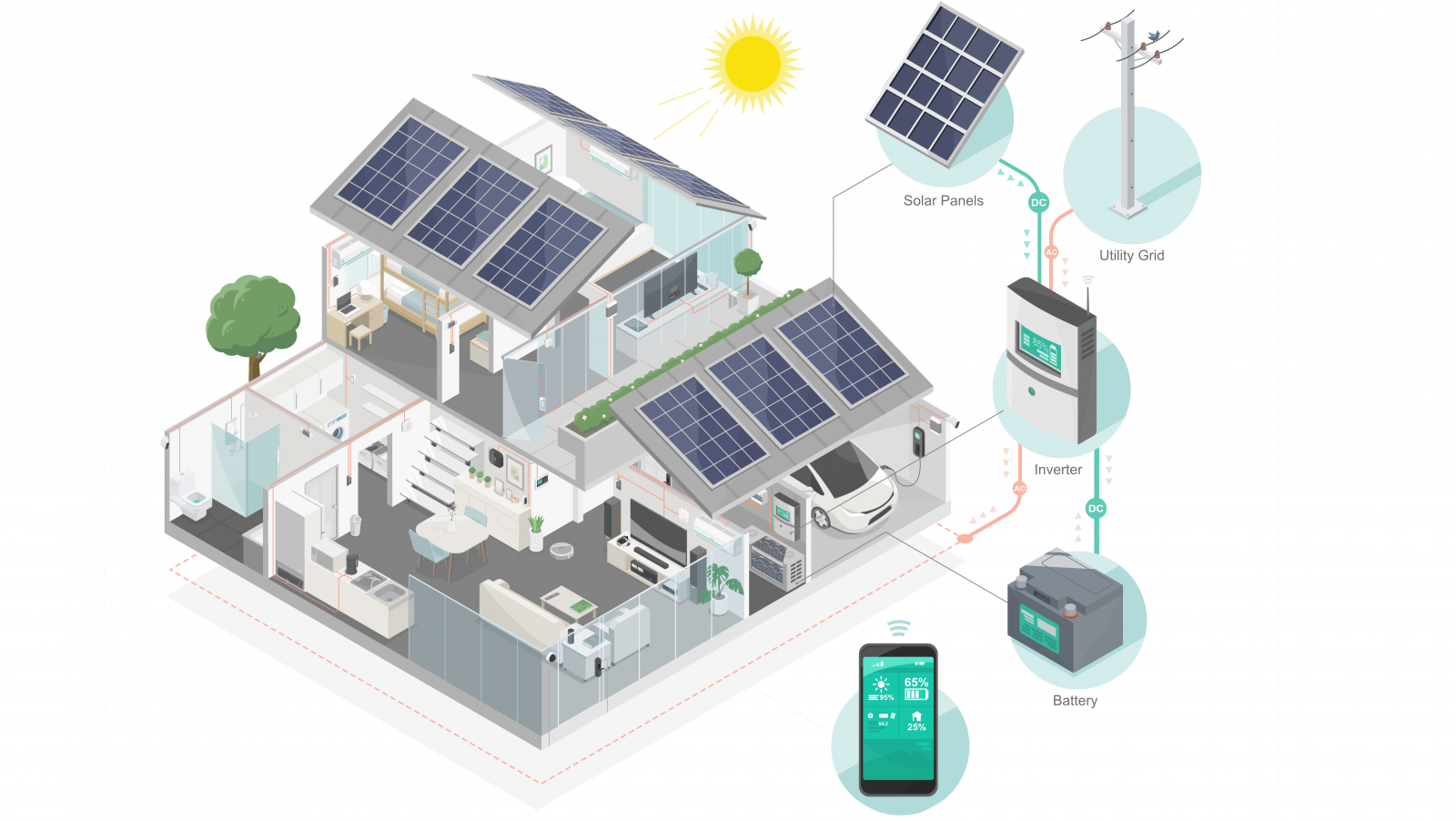Design of solar installation for self-consumption
Timeline
2020-2023Sector
Renewable energy: wind and solarScope
Assessment of the solar resource and photovoltaic plants for self-consumption.BACKGROUND
Based on SOLUTE's solid experience in wind energy and considering the current energy situation, which is benefited for self-consumptions, in addition to the rescinding of the sun tax in Spain with Royal Decree-law 15/2018, of 5 October, we have seen an increase in the demand for self-consumption designs. SOLUTE has carried out several industrial self-consumption projects for large installations in the national tertiary or industrial sector.
The methodology is focused on estimating the expected energy production of a self-consumption photovoltaic plant by correctly defining and sizing the installed equipment to reduce uncertainty, maximise savings and help the customer with the necessary technical and economic aspects. The aim is, therefore, to realistically define, with the minimum possible uncertainty, the solar resource available in an area, to be able to calculate the photovoltaic production of a self-consumption plant, as well as the economic impact of the installation in terms of savings and amortisation of the investment.
This way, the location is assessed to quantify the potential photovoltaic energy and thus achieve its maximum performance by properly selecting and sizing the equipment as well as maximising the use of the available surface.
RESULTS
Objectively define the photovoltaic project, supplying the customer with the energy generation results and impact on the electric bill in terms of energy savings as well as cost savings.
In this type of service, clear information must be provided and the results, both energy and economic, must be graphically supported to facilitate their interpretation by the client, who may not be specialised in the technical development of self-consumption photovoltaic plants.
EXPERIENCE
For more than 15 years, since its establishment, SOLUTE's activity has been focused on Renewable Energies and since 2020, after the pandemic, it has been highly involved in the solar industry, carrying out photovoltaic projects for plant developers and operators. Additionally, we have experience in specific self-consumption projects focused on supplying this service to customers in the services or industrial sector (large consumers).
With the layout of a plant defined and the solar radiation data of the site, a detailed energy calculation is carried out using specialised software such as PVSYST or Helioscope, with all relevant aspects being considered.
METHODOLOGY
In case measured solar radiation data is not available at the location, this information is obtained from satellite sources or weather models such as Solargis, Meteonor or PVGIS.
This data is processed and adjusted to ground stations, if available, to be used with specialised energy software (PVSYST or Helioscope). Based on the available resources and surface as well as the consumptions that are present at the installation, we select and size the most suitable equipment for the location, considering all available technologies: fixed panels, one or two axis trackers, electrical wiring, connectors, boxes, inverters, transformers, other equipment such as meters or protections, etc. For sizing the installation, in addition to the Customer's requirements, Royal Decree-law 15/2018, of 5 October and Royal Decree-law 244/2019, of 5 April, which regulate the maximum power a self-consumption solar installation can have, must be considered in order to qualify for the simplified compensation (this value is 100 kW).
Once the equipment has been defined, the spatial arrangement is laid out, considering if the roof is horizontal or sloped to define the supports. Once this has been carried out, the location of the different arrays and strings are accurately defined along with their electric systems to accurately calculate and optimise all the energy loss at the plant.
With the layout of the defined installation and the solar radiation data of the site, a detailed energy calculation is carried out using specialised software such as PVSYST or Helioscope, considering all relevant aspects of the plant such as the degradation or the different shadows that are cast in each zone.
Then, using in-house tools, the customer's generation and consumption curves are combined. At this point we must be familiar with and carry out the calculation based on the billing regulation that is applicable to the customer, as mentioned in Regulation 1/2021, of 20 January. With this we must consider different aspects such as the possible maximum power compensation and the hourly energy savings and billing period.
Automotive
Add-on stiffness
The moving parts calculation helps to access the vehicle and improve its aesthetic design, as well as serve as a barrier against adverse weather conditions such as wind or rain, to improve passenger safety.
Automotive
HVAC
Capability of guaranteeing a proper heating, ventilation and air conditioning (HVAC) in vehicles used for transport, of both the cabs as well as the compartments where the payload is carried for different reasons, such as conservation or passenger comfort.
